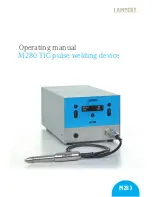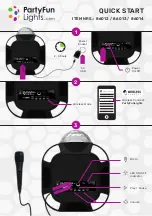
8
8
7.
Dressing material edges.
Always chamfer and deburr all sharp edges.
8.
Do not force tool.
Your machine will do a better and safer job if used as intended.
DO NOT
use inappropriate attachments in an attempt to exceed the machines rated capacity.
9.
Use the right tool for the job.
DO NOT
attempt to force a small tool or attachment to do the
work of a large industrial tool.
DO NOT
use a tool for a purpose for which it was not
intended.
10.
Dress appropriate.
DO NOT
wear loose fitting clothing or jewelry as they can be caught in
moving machine parts. Protective clothing and steel toe shoes are recommended when
using machinery. Wear a restrictive hair covering to contain long hair.
11.
Use eye and ear protection
. Always wear ISO approved impact safety goggles. Wear a full-
face shield if you are producing metal filings.
12.
Do not overreach
. Maintain proper footing and balance at all times.
DO NOT
reach over or
across a running machine.
13.
Stay alert
. Watch what you are doing and use common sense.
DO NOT
operate any tool or
machine when you are tired.
14.
Check for damaged parts
. Before using any tool or machine, carefully check any part that
appears damaged. Check for alignment and binding of moving parts that may affect proper
machine operation.
15.
Observe work area conditions
.
DO NOT
use machines or power tools in damp or wet
locations. Do not expose to rain. Keep work area well lighted.
DO NOT
use electrically
powered tools in the presence of flammable gases or liquids.
16.
Keep children away
. Children must never be allowed in the work area.
DO NOT
let them
handle machines, tools, or extension cords.
17.
Store idle equipment
. When not in use, tools must be stored in a dry location to inhibit rust.
Always lock up tools and keep them out of reach of children.
18.
DO NOT operate machine if under the influence of alcohol or drugs
. Read warning
labels on prescriptions. If there is any doubt,
DO NOT
operate the machine.
19. Sparks and hot material from cutting can easily go through small cracks and openings into
adjacent areas.
20. Do not cut where the atmosphere might contain flammable dust, gas, or liquid vapors such
as from gasoline.
21. Wear oil-free protective garments such as leather gloves, heavy shirt, high shoes or boots,
cuffless trousers, and a cap.
22. Watch for fire and keep a fire extinguisher close by.
23.
DO NOT
touch live electrical components or parts.
24. Turn off power before checking, cleaning, or replacing any torch parts.
Summary of Contents for WP-1800B
Page 18: ...16 16 ELECTRICAL SCHEMATIC...
Page 22: ...20 20 PARTS DIAGRAM Base Plate Assembly Parts Diagram...
Page 23: ...21 21 Carriage Assembly Parts Diagram...
Page 24: ...22 22 Chuck Assembly Parts Diagram...
Page 25: ...23 23 Handwheel Gear Box Assembly Parts Diagram...
Page 26: ...24 24 Control Box Assembly Parts Diagram...
Page 27: ...25 25 Motor Gearbox Assembly Parts Diagram...
Page 30: ...28 28 NOTES...
Page 31: ...29 29 NOTES...











































